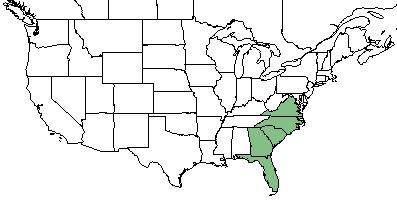Difference between revisions of "Sagittaria graminea"
(→Conservation and Management) |
|||
| Line 42: | Line 42: | ||
==Conservation and Management== | ==Conservation and Management== | ||
| + | ''S. graminea'' is listed as threatened by the Kentucky State Nature Preserves Commission and the Tennessee Department of Environment and Conservation Natural Heritage Program, as endangered by the Ohio Department of Natural Resources Division of Natural Areas and Preserves, as a special concern species by the Rhode Island Department of Environmental Management, and as a noxious weed by the Washington Administrative Code. <ref name= "USDA Plant Database"/> | ||
==Cultivation and restoration== | ==Cultivation and restoration== | ||
Revision as of 14:05, 29 May 2018
| Sagittaria graminea | |
|---|---|

| |
| Photo by John Bradford hosted at Bluemelon.com/poaceae | |
| Scientific classification | |
| Kingdom: | Plantae |
| Division: | Magnoliophyta - Flowering plants |
| Class: | Liliopsida - Moncots |
| Order: | Alismatales |
| Family: | Alismataceae |
| Genus: | Sagittaria |
| Species: | S. graminea |
| Binomial name | |
| Alismatales Michx. | |

| |
| Natural range of Sagittaria graminea from USDA NRCS Plants Database. | |
Contents
Taxonomic Notes
Synonyms: S. graminea Michaux var. graminea; S. graminea ssp. graminea
Varieties: none
Description
S. graminea is a perennial forb/herb of the Alismataceae family native to North America. [1]
Distribution
S. graminea is found in Florida, Georgia, South Carolina, North Carolina, and Virginia. [1]
Ecology
Habitat
S. graminea proliferates in marshes, ponds, freshwater and oligohaline tidal marshes. [2]
Phenology
S. graminea flowers February-July. [3]
Conservation and Management
S. graminea is listed as threatened by the Kentucky State Nature Preserves Commission and the Tennessee Department of Environment and Conservation Natural Heritage Program, as endangered by the Ohio Department of Natural Resources Division of Natural Areas and Preserves, as a special concern species by the Rhode Island Department of Environmental Management, and as a noxious weed by the Washington Administrative Code. [1]
Cultivation and restoration
Photo Gallery
References and notes
- ↑ 1.0 1.1 1.2 USDA Plant Database https://plants.usda.gov/core/profile?symbol=SAGRW
- ↑ Weakley, A. S. (2015). Flora of the Southern and Mid-Atlantic States. Chapel Hill, NC, University of North Carolina Herbarium.
- ↑ PanFlora Author: Gil Nelson URL: http://www.gilnelson.com/PanFlora/ Date Accessed: 5/29/18